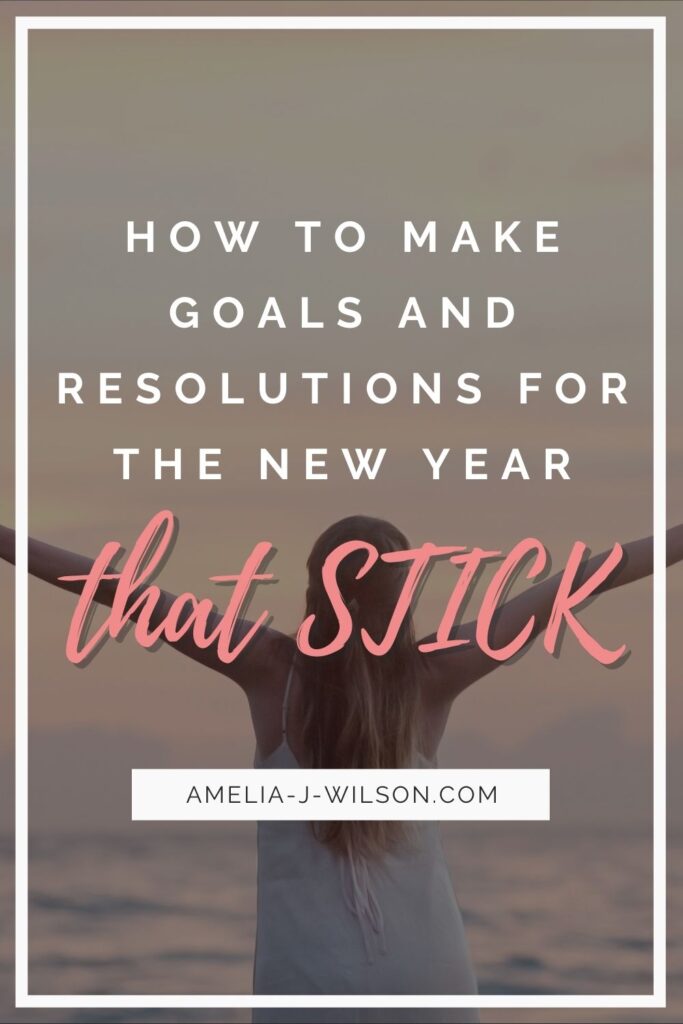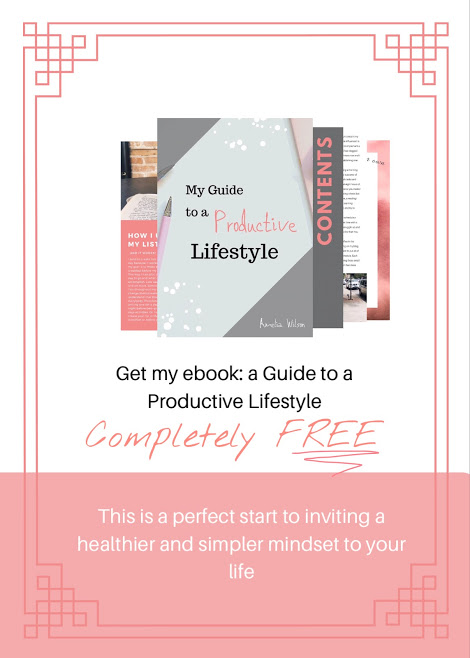2021 is here and if you haven’t already, it’s time for some goal setting! As my blog and youtube channel grow, I’ve become more and more obsessed with curating goals in a healthy and easy-to-follow manner.
As 2020 rounds out, I’ve learned several things and one of them is that you can’t give up on your goals. So, I thought I’d share some of my favorite goal setting tips and tricks with you to help you kick off 2021 to a good start!
Disclaimer: All of the views and opinions in this post are solely my own and are not sponsored. This post may include affiliate links, meaning I earn a commission through links at no cost to you.

Reflect on the past year
The first thing you should do is reflect on the past year. Many people tend to skip right over this step and jump straight into goal-setting for the new year. The problem with that is that you can trap yourself in bad habits and implausible goals that you’ll struggle to achieve.
Every year presents its ups and downs and 2020 certainly proved that to us. If you want 2021 to be better, you need to make a few reflections on the past year:
- What was the greatest lesson of the past year?
- What did you learn?
- Name three wins of the past year.
- Name three fails.
- Why were those fails?
- Where did your expectations fall apart?
- What are you proud of?
- What is one goal that will roll over to the new year?
There are several questions you can ask yourself, but I think this is a good foundation. As you may already know, I’m in love with journaling and firmly believe it can help alleviate stress and anxiety.
I highly recommend that you write these answers down in a journal or on paper to help you really understand where you’ve been this past year and what worked and what didn’t.
Read: Beginner’s Guide to Journaling
Align your goals with your Ikigai/purpose
Once you’ve reflected on your past year, it’s time to define your ikigai or purpose. Ikigai is a Japanese term that means “reason for being.” You may have seen this image below:
The ikigai aligns what you love, what you’re good at, what the world needs, and what you get paid to do to help you find your ikigai or true purpose.
Filling out the chart is a great way to better understand your overall purpose and character. And the great thing is, you don’t have to have only one answer for each category! For example, I love reading, writing, and learning. And its totally fine to include all three in the love category.
Take a few moments to fill out the chart so it aligns with your values and professions. If you struggle, just come back to the main four sections and ask yourself:
- What do I love to do?
- What do I get paid to do right now?
- What am I good at?
- What does the world need?
It’s a great exercise that can truly help you better understand yourself. Furthermore, your ikigai or purpose is a great start for defining what you should do in the coming year. Ideally, your goals will align with your ikigai and will help lead you to greater success.
Word of the year
Once you have your ikigai or purpose, I highly encourage you to make a word of the year. I make a new word at the end of every year right at the new year. Rather than shouting “happy new year!” as my first words of the new year, I speak one word that will represent my life path for the next year.
Here are words from my past years:
2016 – Believe
2017- “I will”
2018 – “I am”
2019 – “I can”
2020 – change
Notice how for three years I chose phrases rather than words. In 2016, I chose a single word “believe.” The following years, I began statements with “I”. “I will,” “I am,” “I can.”
This is due to the nature of the word I was choosing. “I will,” was meant for empowering. “I am,” was meant for acceptance. And “I can,” was for strength. You can choose a small phrase or a single word to empower your year. No matter what you choose, keep that word somewhere where you can see it as a reminder of your goals.
I keep my word on my phone lock screen for the whole month of January as a reminder. But you can also keep it on your calendar, bulletin board, desk, or bullet journal. Just make sure you can see it.
Make your goals definitive
Alright, so you have your purpose and you have a word for your new year, now it’s time to make some goals.
The number one rule for setting goals that WORK is to make them definitive. Goals need to be specific. All too often, we set goals for ourselves (resolutions) for the new year that end up getting dropped by February. Why? Because we don’t define them and make them specific and actionable.
Read my post: How to Stay Productive Once You Start
If you’ve read my blog post on actionable lists or watched my youtube video on the same topic, you’ll already understand this topic.
My tip for new goal setters is simple: put a number to it.
It sounds silly, but adding a number to your goal truly transforms it into something tangible and actionable.
Example of a poorly defined goal:
“This year I want to exercise more.”
This is a great goal, but what does it mean? What does more look like to you? What’s the intended outcome? How often will you need to workout to achieve this goal?
Example of a definitive goal:
“This year, I want to workout for 30 minutes, 5 times a week.”
“This year, I want to successfully run a 5k marathon.”
“This year, I want to be able to lift 200lbs of weight at the gym.”
“This year, I want to lose 20lbs.”
See the difference? The bottom goals are definitive. Each one contains some form of measurement for success. This makes it easier to recognize when you’ve achieved your goal and it pushes you to keep working until you achieve it.
The top goal in the definitive list is interesting because there is no defined outcome of success. It says “This year I want to workout for 30 minutes, 5 times a week.” For a goal like this, you’ll achieve success at the end of the year after you’ve formed the habit of workout almost every day.
The point I wanted to make with that goal is that your goals don’t necessarily have to have an “outcome.” They need to be definitive, but they can be ongoing as well.
For example, one of my goals for the new year is:
“This year, I want to write 2k words for my WIP every day.”
It’s measurable. It’s definitive. And, it’s ongoing.

Turn them into habits
Once you have measurable and definitive goals, you need to turn them into habits.
It sounds strange, but habits are the basis of achieving success—especially when your goals are ongoing. For a goal like working out every day or writing every day, it’s best to transform these goals into habits.
Habits make your goals “stick” and it also provides you with the opportunity to track your progress.
I have a few videos on youtube that discuss forming habit trackers to help you track your success.
What I love about habit trackers with ongoing goals, is that you can measure your progress and adjust your goal as necessary. If I find that I can only successfully write 1k words a day, I’ll need to adjust my goal. Otherwise, I may become frustrated and downcast that I can’t achieve my goal.
Alternatively, maybe you realize after working out for 30 minutes each day, you want to bump it up to 45. Habit trackers show you what’s possible and where you are succeeding and lacking. This allows you to adjust habits as you see fit and make ongoing goals easier to track and understand.
Atomic Habits
If you want to make your goals into a habit (and I highly suggest that you do) I recommend that you read Atomic Habits by James Clear.
I have a video on youtube about some of his theories and how beneficial they are for the new year, so definitely check that out for a more in-depth look.
However, I do want to point out some key insight here.
First, Clear promotes the idea of definitive habits and habit tracking. As I mentioned above, both allow you to find insight on your goals and habits and allow you to document your successes and failures for better reflection.
He also has several “power statements” as I call them that can help you form habits and keep them.
I will save much of this information for a separate article, but one of my favorite power statements is:
I will [behavior] at [time] in [location].
This statement is measurable. It’s definitive. And It’s one of the best ways I’ve found to transform a goal into a habit.
Going with our ongoing exercise example:
“I will exercise for 30 minutes at the gym.”
OR
“I will exercise at 10am at the gym.”
Either way, the goal becomes extremely specific. And once you tie a place and time to a goal, it quickly becomes a doable habit.
Using this formula, you could go so far as to make a statement like:
“I will exercise at 10am for 30 minutes at my local gym and I will do this 5 times a week.”
Suddenly, you goal became a definitive habit that is easy to follow and execute. You’re more likely to keep your habit beyond February if you do this!
If you have a non-ongoing goal, you can do something like:
“I will have a green smoothie every morning at 10am after my morning run in order to lose weight and achieve my 20lb goal.”
The great thing about this statement is that it allows you to get creative and find solutions to one-off goals like losing 20lbs. How do you plan to lose 20lbs? By drinking a green smoothie after your run!
Again, if you want more insight, I’ll have to save it for another blog post. Or, you can read James Clear’s Atomic Habits or watch my youtube video on resolutions!
- Everything you perceive is thought: what to know about the role of consciousness on reality
- Universal oneness: what does it mean and why is it important?
- Agnosticism and soul-searching: Tips to help you define your spiritual belief system
- 23 Things to Help You Navigate a Quarter Life Crisis
- How to live with intention & why it’s so important to have an intentional mindset

If you like this post, check out some similar posts of mine below!
Feel free to leave a comment below and let me know what your new year’s resolutions are!
You can also email me with questions or concerns you may have at info.amelia.wilson@gmail.com
My new book, Witch in the Water, is available on Amazon!
Also, check out my poetry book, The Lights are on but Nobody’s Home, available now on amazon for $6.99!
Disclaimer: All of the views and opinions in this post are solely my own and are not sponsored. This post includes affiliate links, meaning I earn a commission through links at no cost to you.
Thanks again

